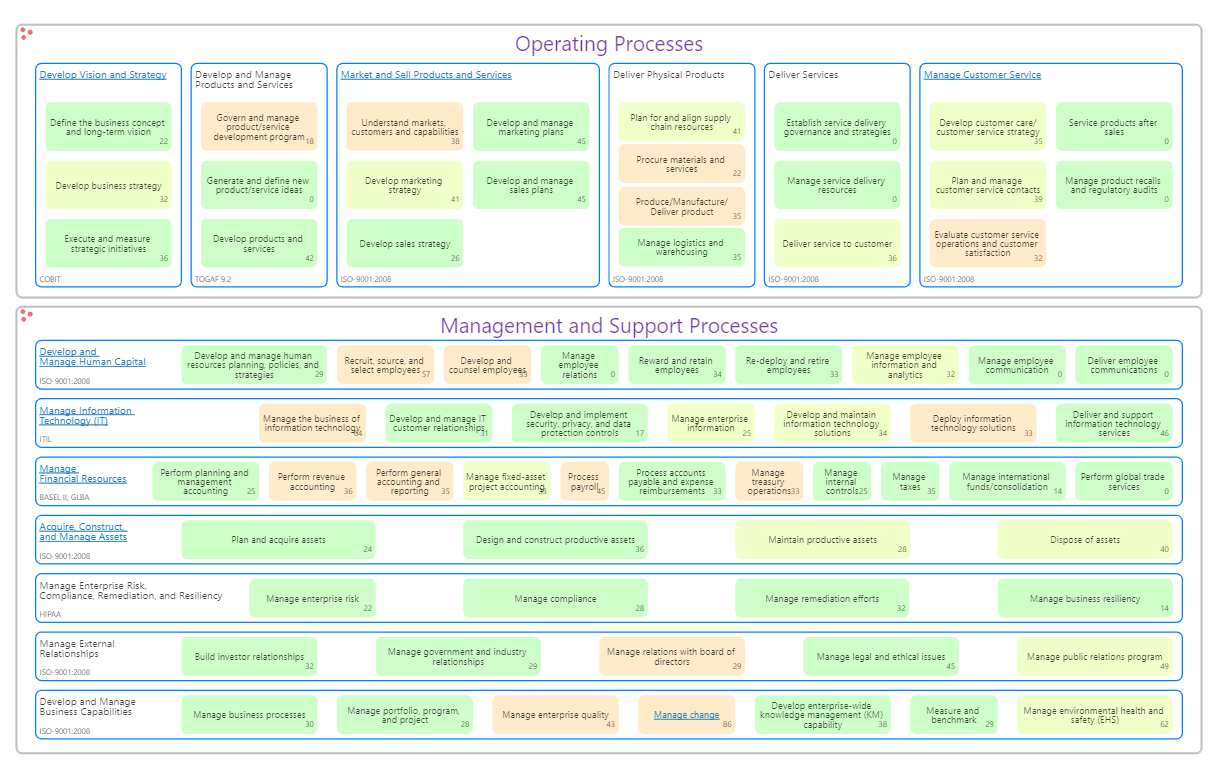Guide to Business Capability Modeling
Business capability models and maps are key to enterprise architecture, with over 90 per cent of enterprise architects either using or planning to use capability models.
First, what exactly are Business Capabilities?” Let’s start with the term Capability. The Oxford Dictionary states that a capability is “the ability or qualities necessary to do something.”
So, if we look at this from a business standpoint, Business Capabilities are core to “what” a business does and can do. Not to be confused with business processes which have more focus towards “how” a particular activity gets done. *
“Capabilities define what, not how, a business does something, meaning that capabilities provide a robust, long-standing business perspective” – BizBok
By identifying your key business capabilities, you can help bring focus to what differentiates your business from your competitors and distinguish what does or needs to happen to reach your business goals, whether this may be reducing costs, meeting KPIs or defining new projects.
Using Business Capabilities in Enterprise Architecture
Business Capability Modeling is often regarded as an essential tool for understanding organizational strengths and priorities, as well as guiding confident and informed decisions.
“Business capability modeling is a technique for the representation of an organization’s business anchor model, independent of the organization’s structure, processes, people or domains.” Gartner**
If we consider architecture in the form of creating infrastructure (whether digital or physical) then we can liken business capabilities to building blocks.
Architects use these blocks; People, Processes and Supporting Technology, as a foundation to help build and structure their models and roadmaps. Using capabilities to highlight the overall functions of the organization, as well as the strategies and IT solutions needed to meet business goals.
Using capabilities to model the business in real-time, architects are able to quickly identify gaps and duplications within their current state. This in turn can help reduce costs through consolidation and centralization.

Enterprise Architecture Business Capability Model (in ABACUS Dashboard)
Benefits of Business Capability Modeling
- Identify gaps, duplications, and redundancies
- Deliver focused quick wins (from determined pain-points)
- Prioritisation projects based on strategy vs real need
- Business-friendly communication tool to share with stakeholders
- Provides a current view of how IT is delivering services to the business
Properly defined, Business Capabilities are key to successful and aligned IT and business strategy.
Industry reference models, templates, and analytics are available in ABACUS which can be used to accelerate the production of capability models for your organization. Use these to guide a path towards your end goals whilst identifying gaps which in turn may help consolidate costs, decrease risk, and enable growth.
To find out more on how ABACUS can help support your Business Capability Modeling please contact our team for a demo.
Roadmap to Business Capability Maturity
Capability modeling can be extended by incorporating an understanding of capability maturity. Approaches such as Capability Maturity Modeling Integration (CMMI) help to identify the 5 key maturity tiers; Incomplete, Initial, Managed, Defined, Quantitatively Managed, Optimizing.
Evaluating your capability maturity involves understanding the efficiency and efficacy of processes and systems supporting capabilities. Through capability evaluation, architects can anchor their enterprise architecture roadmaps by charting them along a path for improvement. Helping to prioritize and clarify your business needs.
Capabilities also provide a throughline for current and target state comparisons which demonstrate how maturity is improved through changes across domains. This will also be reflected in business relevant metrics such as cost, risk, impact, reliability, and complexity.
Webinar: How to Evaluate Current Capabilities & Build a Business Capability Roadmap
Discover how to evaluate your current capabilities and how to build a roadmap for capability optimization. Including:
- Using algorithms to evaluate capabilities
- Generating capability maturity lifecycles from supporting business and IT components
- Planning a target state
- Comparing target and current state capabilities.

